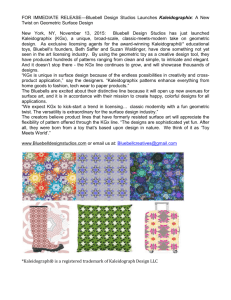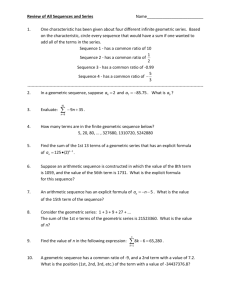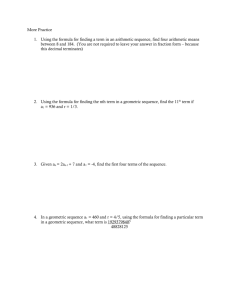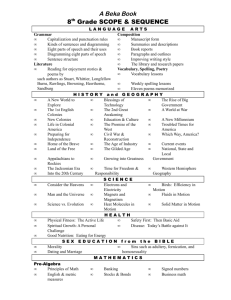Test * Chapter 1
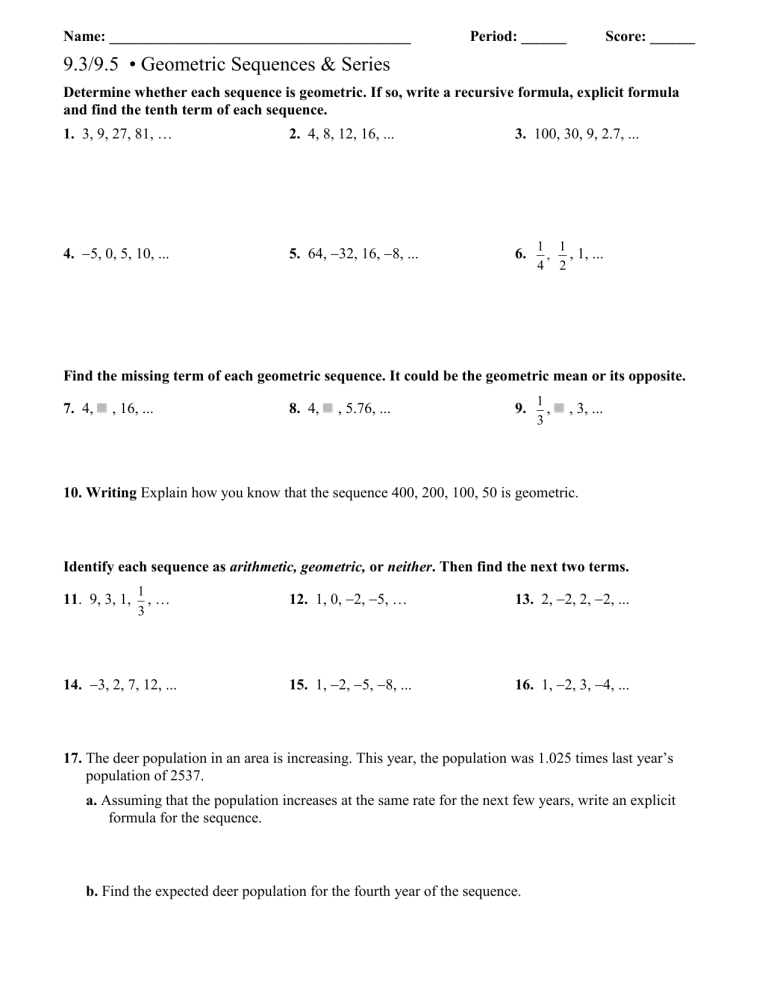
Name: ________________________________________ Period: ______ Score: ______
9.3/9.5 • Geometric Sequences & Series
Determine whether each sequence is geometric. If so, write a recursive formula, explicit formula and find the tenth term of each sequence.
1.
3, 9, 27, 81, …
2. 4, 8, 12, 16, ... 3. 100, 30, 9, 2.7, ...
4.
5, 0, 5, 10, ... 5. 64,
32, 16,
8, ... 6.
1 1
,
4 2
, 1, ...
Find the missing term of each geometric sequence. It could be the geometric mean or its opposite.
7. 4, , 16, ... 8. 4, , 5.76, ... 9.
1
3
, , 3, ...
10. Writing Explain how you know that the sequence 400, 200, 100, 50 is geometric.
Identify each sequence as arithmetic, geometric, or neither. Then find the next two terms.
11 . 9, 3, 1,
1
3
, … 12. 1, 0,
2,
5, … 13. 2,
2, 2,
2, ...
14.
3, 2, 7, 12, ... 15. 1,
2,
5,
8, ... 16. 1,
2, 3,
4, ...
17. The deer population in an area is increasing. This year, the population was 1.025 times last year’s population of 2537. a. Assuming that the population increases at the same rate for the next few years, write an explicit formula for the sequence. b. Find the expected deer population for the fourth year of the sequence.
Evaluate each series that has a sum for the specified number of terms.
18.
40 + 20 + 10 +…; n = 10 19.
4 + 12 + 36 + …; n = 15 20.
100 + 200 + 400 + …; n = 6
21.
8 + 4 + 2 + 1 +…
22. 1
1
3 9 27
23. ∑
12
(−2.1) 𝑛−1 𝑛=1
24. Suppose your business made a profit of $5500 the first year. If the profit increased 20% per year, find the total profit over the first 5 yr.
25. The first year a toy manufacturer introduces a new toy, its sales total $495,000. The company expects its sales to drop 10% each succeeding year. Find the total expected sales in the first 6 years. Find the total expected sales if the company offers the toy for sale for as long as anyone buys it.
Determine whether each series is arithmetic or geometric. Write series in summation notation.
Then evaluate the series for the specified number of terms.
26. 2 + 5 + 8 + 11+ …; n = 9 27.
1
1
1
1
8 16 32 64
; n
8
28.
− 3 + 6 − 12 + 24 − …; n = 10 29.
− 2 + 2 + 6 + 10 + …; n = 12




